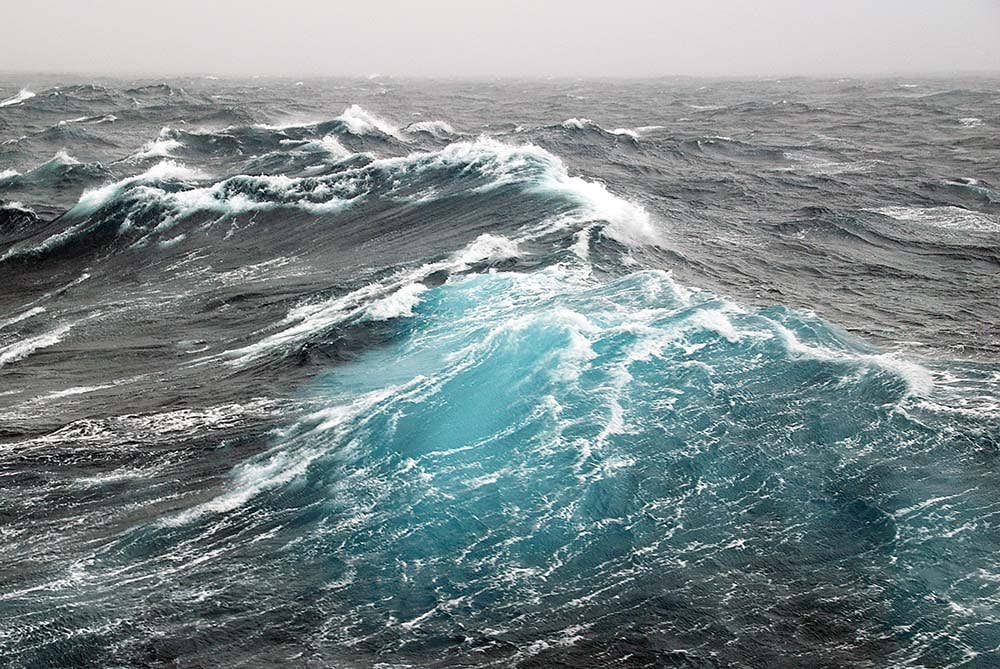The Southern Ocean captures 25% more CO2 than previously thought
Researchers have found that the Southern Ocean absorbs more carbon dioxide (CO2) than previously thought.

The Southern Ocean (CREDIT: Saildrone)
You might be surprised to learn that the Southern Ocean absorbs more carbon dioxide (CO2) than scientists previously thought. Recent research led by the University of East Anglia (UEA) and Plymouth Marine Laboratory (PML) has revealed that this ocean surrounding Antarctica absorbs 25% more CO2 than earlier estimates suggested.
Using direct measurements of CO2 exchange between the air and sea, researchers discovered that the Southern Ocean's role in absorbing CO2 emitted by human activities is much larger than previously recognized. This absorption is crucial for controlling Earth's climate, yet there's been significant uncertainty about the magnitude and variability of this flux.
Previously, estimates of CO2 absorption in the Southern Ocean were based on data from shipboard measurements, profiling floats deployed in the ocean, and global ocean biogeochemistry models. These methods, such as those used for the Surface Ocean CO2 Atlas (SOCAT), produced widely varying results.
In this new study, scientists employed a novel technique called eddy covariance, using flux systems mounted on ships’ foremasts to directly measure air-sea CO2 fluxes. This approach was implemented during seven research cruises in the Southern Ocean region.
Published in the journal Science Advances, the study reveals that the summer Southern Ocean is likely a strong CO2 sink, challenging previous weaker estimates based on float data and model simulations. According to the authors, these earlier models "substantially underestimate" the observed CO2 uptake.
Related Stories
Dr. Yuanxu Dong, lead author from UEA’s Centre for Ocean and Atmospheric Sciences (COAS) and PML, currently at the GEOMAR Helmholtz Centre for Ocean Research Kiel, explained, “This is the first time a large number of direct air-sea CO2 flux observations have been used to assess existing flux products in the Southern Ocean. Our findings provide direct observational evidence that this ocean may take up more CO2 than previously recognized.”
Accurate quantification of the Southern Ocean CO2 sink is essential for assessing Earth’s climate. However, it's the most uncertain region regarding its CO2 sink capacity. Dr. Dong emphasized, “Our study reduces this uncertainty and improves the understanding of Southern Ocean CO2 uptake. We recommend future estimates include temperature adjustments and higher resolution reconstruction and modeling.”
The research team, including scientists from the Alfred Wegener and Max Planck Institutes in Germany, the Flanders Marine Institute in Belgium, and the University of Hawai'i in the US, investigated inconsistencies in existing CO2 flux estimates. They used the eddy covariance flux observations to evaluate different data sets.
The cruise data covered approximately 3300 hours—about 175 days—of measurements during the Antarctic summer of 2019 and 2020, defined as November to April, over an area of highly dynamic frontal zones. Measurements were taken hourly, in contrast to float data, which are typically gathered every 10 days.
Dr. Mingxi Yang, a study co-author and Chemical Oceanographer at PML, noted, “The Southern Ocean is a key sink of CO2, but the magnitudes and locations of this ocean uptake are uncertain. PML's autonomous and high-frequency eddy covariance system has significantly increased the number of direct air-sea CO2 flux measurements in this region.”
Yang added, “This paper offers the first comparison between direct CO2 flux measurements and estimates from coarse data products and global models on a large spatial and temporal scale. It has helped validate these estimates and shed light on ways to improve them.”
One challenge in measuring CO2 fluxes in the Southern Ocean is the lack of winter data, as accessing the region during winter is difficult. While profiling floats partially address this issue, they still fall short. The authors of the study acknowledge that their cruise data covers only part of the Southern Ocean in summer, emphasizing the need for ongoing high-quality observations to improve estimates of air-sea CO2 fluxes.
Future efforts should include expanding measurements to more ships and further deploying buoys and sail drones, especially in winter. Additional observations in winter by unattended platforms could help fill this seasonal data gap.
Prof. Tom Bell, a co-author and PML Ocean-Atmosphere Biogeochemist, shared that they have moved their flux system onto the new icebreaker, the RRS Sir David Attenborough, and collected the first set of flux measurements during a research cruise in the Weddell Sea earlier this year. He stated, “We aim to continue this valuable work over the coming years, which is essential for monitoring the current climate and forecasting future changes.”
The researchers also highlighted a concerning trend: the amount of shipboard surface ocean CO2 measurements has drastically declined in recent years, partly due to the COVID-19 pandemic and reduced funding. For instance, the number of annual datasets in SOCAT decreased by 35% from 2017 to 2021, and by 40% for the Southern Ocean.
Dr. Dorothee Bakker, from UEA’s COAS and chair of SOCAT, stressed the importance of sustained and expanded funding for surface ocean CO2 measurements and their synthesis in SOCAT. She stated, “There is a real need for sustained and expanded funding of surface ocean CO2 measurements and their SOCAT synthesis, to constrain Southern Ocean CO2 uptake, support the World Meteorological Organization’s Global Greenhouse Gas Watch monitoring initiative, and inform climate policy.”
This research underscores the vital role of the Southern Ocean in the global carbon cycle and highlights the need for continued and enhanced monitoring efforts to better understand and mitigate climate change impacts.
Note: Materials provided above by The Brighter Side of News. Content may be edited for style and length.
Like these kind of feel good stories? Get The Brighter Side of News' newsletter.



